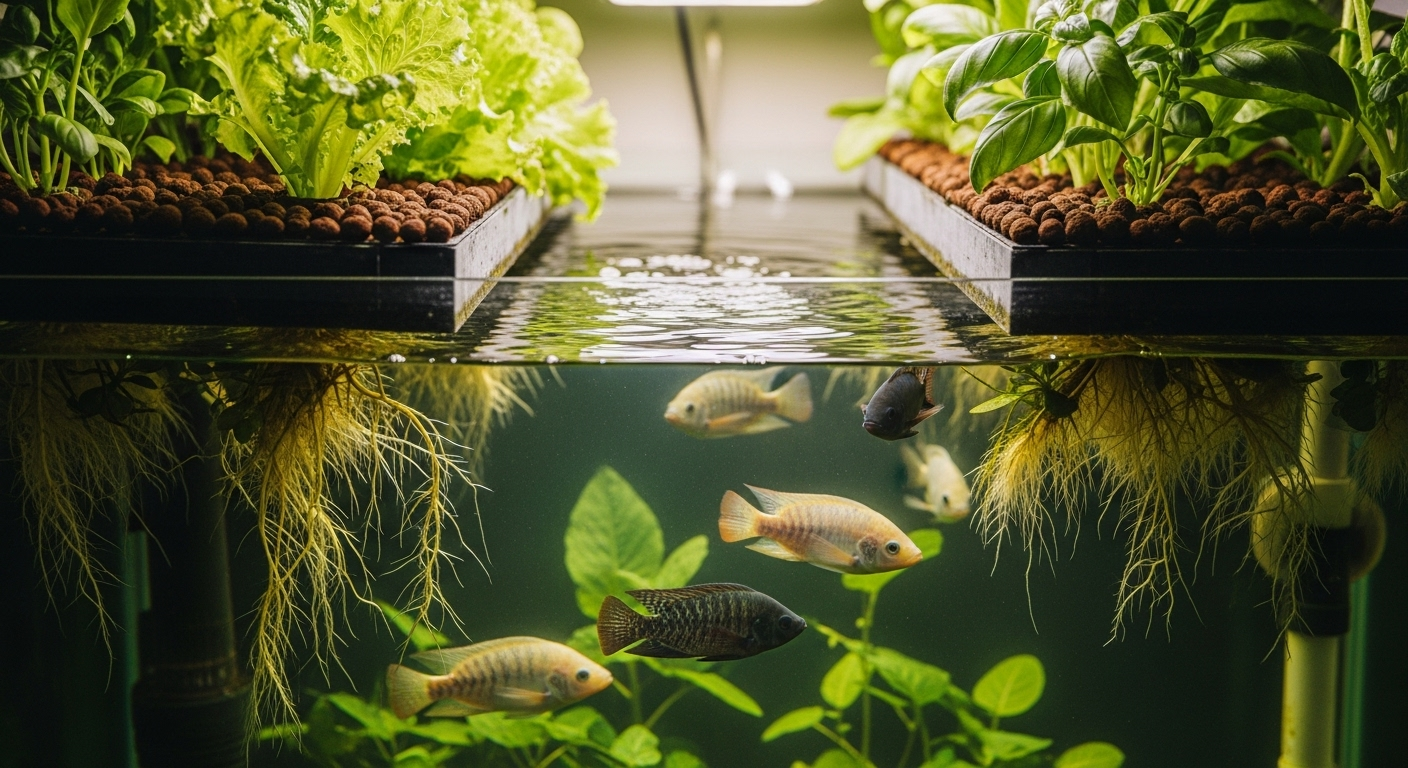Aquaponics: The Future of Sustainable Pet Fish Keeping
Imagine a world where your pet fish not only thrive in their aquarium but also contribute to a miniature ecosystem that produces fresh herbs and vegetables for your kitchen. This is the fascinating realm of aquaponics, a revolutionary approach to fish keeping that's gaining traction among eco-conscious pet owners and urban gardeners alike.

The Science Behind Aquaponics
At its core, aquaponics relies on the nitrogen cycle to create a mutually beneficial environment for fish and plants. Fish produce ammonia-rich waste, which is converted into nitrites and then nitrates by beneficial bacteria. These nitrates serve as essential nutrients for plants, which in turn purify the water as they absorb these compounds.
This natural filtration process eliminates the need for frequent water changes in traditional aquariums, reducing water consumption and maintenance time. The result is a self-sustaining ecosystem that closely mimics nature’s own balance, providing an optimal environment for both aquatic life and plant growth.
Benefits for Pet Fish
Aquaponic systems offer numerous advantages for pet fish, making them an attractive option for both novice and experienced aquarists. The constant circulation of water through the plant beds ensures excellent water quality, reducing stress on fish and promoting overall health. This improved water quality often leads to increased growth rates and longevity in aquaponic fish compared to those in traditional aquariums.
Moreover, the diverse ecosystem created by the presence of plants and beneficial bacteria more closely resembles a fish’s natural habitat. This can result in more natural behaviors and reduced aggression among fish, particularly in community tanks. The lush plant growth also provides additional hiding spots and exploration areas, further enriching the fish’s environment.
Versatility in Plant and Fish Selection
One of the most exciting aspects of aquaponics is its versatility. A wide range of fish species can thrive in these systems, from popular aquarium fish like guppies and tetras to edible species such as tilapia and trout. This flexibility allows pet owners to choose fish based on their preferences, whether they’re looking for colorful ornamental species or considering a small-scale food production system.
On the plant side, aquaponics supports an impressive variety of crops. Leafy greens like lettuce, spinach, and herbs are particularly well-suited to these systems, but with proper planning, even fruiting plants like tomatoes and peppers can be successfully grown. This diversity not only adds visual interest to the setup but also provides fresh, homegrown produce for the household.
Eco-Friendly and Space-Efficient
As urbanization continues and living spaces shrink, aquaponics offers a space-efficient solution for those wanting to keep fish and grow plants. Vertical designs and compact systems make it possible to create thriving ecosystems in small apartments or on balconies. This efficiency extends to resource use as well, with aquaponic systems using up to 90% less water than traditional soil-based gardening methods.
The closed-loop nature of aquaponics also means reduced reliance on chemical fertilizers and pesticides, making it an environmentally friendly option for sustainable living. By producing food at home, aquaponics enthusiasts can reduce their carbon footprint associated with transportation and packaging of store-bought produce.
Challenges and Considerations
While aquaponics offers numerous benefits, it’s not without its challenges. Maintaining the delicate balance between fish, plants, and beneficial bacteria requires careful monitoring and some technical know-how. Factors such as pH levels, water temperature, and nutrient concentrations must be regularly checked and adjusted to ensure the system’s health.
Initial setup costs can also be higher than traditional aquariums or gardening methods, with prices ranging from $200 for small, DIY setups to several thousand dollars for larger, commercial-grade systems. However, many enthusiasts find that the long-term savings on water, fish food, and produce offset these initial investments.
The Growing Aquaponics Community
As interest in aquaponics grows, a vibrant community of enthusiasts, educators, and innovators has emerged. Online forums, social media groups, and local meetups provide valuable resources for newcomers and experienced practitioners alike. This community-driven approach has led to rapid advancements in system design and best practices, making aquaponics more accessible to a wider audience.
Educational institutions are also taking note, with many schools incorporating aquaponics into their science curricula. These hands-on systems provide excellent opportunities for students to learn about ecology, biology, and sustainable food production in a tangible, engaging way.
Future Prospects and Innovations
The future of aquaponics in pet fish keeping looks bright, with ongoing research and development promising even more efficient and user-friendly systems. Innovations in LED lighting, IoT-enabled monitoring, and automated feeding systems are making it easier than ever to maintain thriving aquaponic ecosystems.
As awareness of environmental issues grows and the demand for sustainable living solutions increases, aquaponics is poised to play a significant role in the future of both pet keeping and urban agriculture. Whether you’re a dedicated aquarist looking to expand your hobby or an eco-conscious individual seeking a more sustainable way to keep fish and grow food, aquaponics offers an exciting and rewarding path forward.




